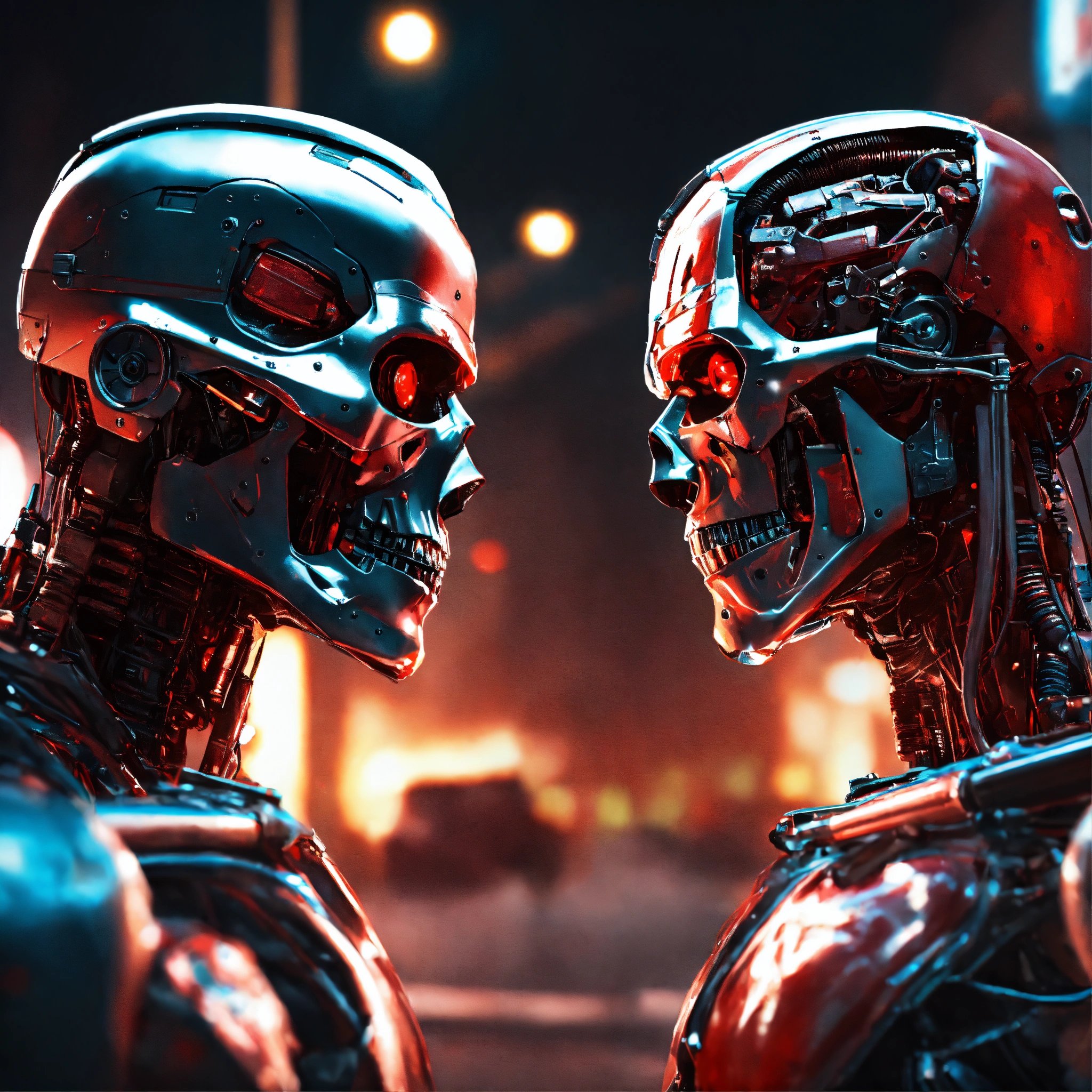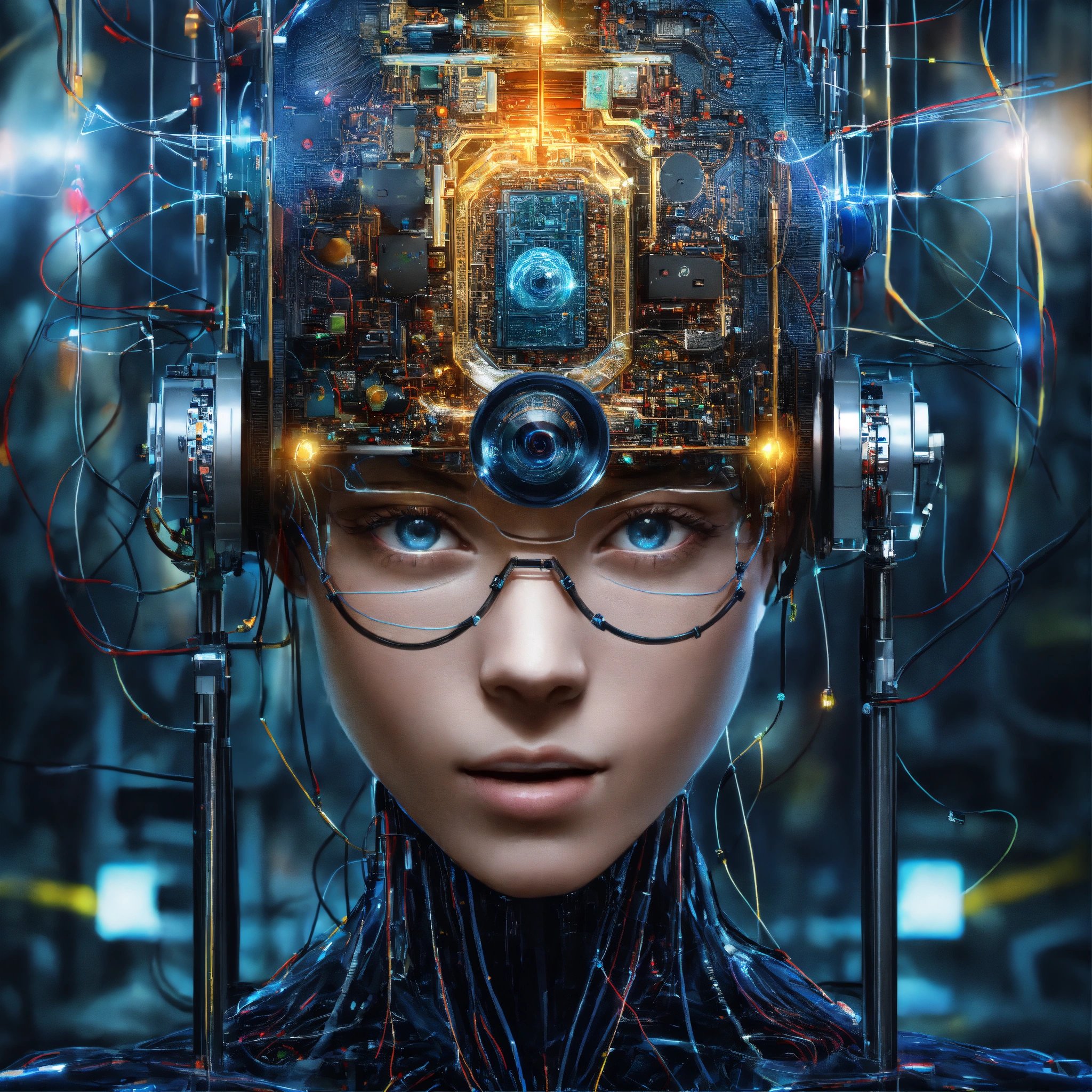Artificial Intelligence, or AI as it’s commonly known, has become an integral part of our daily lives. From voice-activated assistants to predictive algorithms, AI has ushered in a new era of convenience and efficiency. But amidst the marvels of technological progress, a pressing question lingers: Can AI be dangerous? Let’s delve into the intricate web of AI risks, ethical considerations, and the impact on humanity.
The Potential of Artificial Intelligence
AI, at its core, holds immense potential. It has transformed industries, optimized processes, and brought about innovations that were once deemed impossible. In healthcare, AI aids in diagnostics and treatment planning, enhancing the precision of medical interventions. Financial institutions leverage AI for fraud detection, ensuring the security of transactions. The positive impact is palpable across various sectors, making our lives more connected and efficient.
The Dark Side: Can AI Be Dangerous?

However, the rise of AI also raises concerns about its darker side. As we entrust machines with decision-making tasks, the potential for unintended consequences and ethical dilemmas looms large. The question arises: Can AI be dangerous, and if so, how? To answer this, we must navigate through the risks and threats that accompany the rapid evolution of artificial intelligence.
AI Risks and Threats
Data Privacy Concerns
One of the foremost concerns in the realm of AI is data privacy. As AI systems process vast amounts of personal data, the risk of unauthorized access and misuse becomes a significant worry. From facial recognition to predictive analytics, the potential for infringing upon individual privacy is a genuine threat that demands attention.
Cybersecurity Threats and Vulnerabilities
The interconnected nature of AI systems opens the door to cybersecurity threats. Hackers and malicious actors may exploit vulnerabilities in AI algorithms, leading to data breaches and system manipulations. As AI becomes more intertwined with critical infrastructure, the stakes for cybersecurity are higher than ever.
Potential Misuse of AI Technology
The power wielded by AI can be a double-edged sword. If harnessed for nefarious purposes, AI technology can amplify harm. Deepfake technology, for instance, enables the creation of realistic but entirely fabricated content, raising concerns about misinformation and manipulation.
Autonomous Weapons and Military Applications
The development of autonomous weapons powered by AI poses a grave threat to global security. The lack of human oversight in decision-making processes raises ethical questions and the potential for unintended consequences on the battlefield.
Ethical Considerations in AI
In the quest for technological advancement, ethical considerations often take a back seat. The issue of bias in AI algorithms is a glaring example. When AI systems are trained on biased datasets, they can perpetuate and even exacerbate societal inequalities. From hiring algorithms to law enforcement tools, the impact of biased AI is far-reaching.
Discrimination and Fairness Issues
AI, when not developed with fairness in mind, can lead to discriminatory outcomes. Facial recognition software, for instance, has been criticized for its higher error rates in identifying individuals with darker skin tones. Addressing these issues requires a commitment to fairness and inclusivity in AI development.
Transparency and Accountability in AI Development
To mitigate ethical concerns, transparency and accountability must be at the forefront of AI development. Understanding how AI systems reach decisions is crucial for building trust. Establishing clear guidelines and ethical frameworks can ensure that AI serves humanity without compromising on values.
The Role of Ethics in Shaping AI Policies
Ethical considerations should not be an afterthought but an integral part of shaping AI policies. Governments, corporations, and researchers must collaborate to establish global standards that prioritize ethical AI development. Only through a collective commitment to ethical principles can we navigate the challenges posed by advancing AI technologies.
Safety Measures in AI Development
As we grapple with the potential dangers of AI, it’s imperative to explore safety measures that can guide responsible AI practices.
Importance of Responsible AI Practices
Responsible AI practices entail a holistic approach to development, encompassing ethical considerations, transparency, and user safety. Developers play a pivotal role in ensuring that AI systems are designed with the well-being of users and society in mind.
Regulatory Frameworks and Guidelines
The absence of comprehensive regulations poses a challenge in mitigating AI risks. Governments worldwide need to collaborate on establishing regulatory frameworks that set clear guidelines for AI development, deployment, and monitoring. Such regulations can act as a safeguard against the misuse of AI technology.
Industry Standards for AI Safety
Within the tech industry, establishing and adhering to standardized safety measures is paramount. Industry leaders must set the bar high for AI safety, encouraging a culture of responsibility and accountability. Collaboration among tech companies can lead to the development of best practices that prioritize user safety.
Incorporating Safety Measures in AI Algorithms
Safety should be an integral part of the AI development lifecycle. From the initial design phase to ongoing updates, developers must prioritize the implementation of safety measures. Regular audits, testing, and user feedback can help identify and rectify potential risks before they escalate.
The Dangers of Unchecked AI Advancements
As AI continues to advance at a rapid pace, the dangers of unchecked progress become increasingly evident.
The Potential for Job Displacement
The integration of AI into various industries brings with it the potential for job displacement. Routine tasks that were once performed by humans are now automated, raising concerns about the impact on employment. Striking a balance between technological innovation and preserving jobs is a challenge that requires proactive solutions.
Socioeconomic Impacts of AI on Different Communities
The benefits of AI are not distributed equally. Socioeconomic disparities can widen if certain communities or regions are left behind in the AI revolution. Bridging the digital divide and ensuring equal access to AI-driven opportunities are essential for fostering inclusive progress.
The Concentration of Power in AI Technology
The concentration of power in the hands of a few tech giants raises concerns about monopolistic control over AI technology. A balanced and decentralized approach to AI development is crucial for preventing the concentration of power, ensuring that the benefits of AI are shared across diverse stakeholders.
Responsible AI: A Necessity for the Future
In light of the potential dangers and challenges posed by AI, the concept of responsible AI emerges as a necessity.
The Concept of Responsible AI
Responsible AI goes beyond mitigating risks; it involves a commitment to ethical principles, transparency, and societal well-being. It’s a paradigm shift that places humanity at the center of technological advancements, ensuring that progress aligns with our collective values.
Promoting Transparency and Accountability
Transparency is the cornerstone of responsible AI. Users and stakeholders should have a clear understanding of how AI systems operate, make decisions, and impact society. Accountability mechanisms, such as audits and oversight, are essential for holding developers and organizations responsible for the consequences of their AI systems.
Collaborative Efforts for Ethical AI Development
The responsibility for shaping the future of AI extends beyond individual developers and organizations. Collaborative efforts involving governments, academia, industry, and civil society are essential for establishing a framework that guides ethical AI development. Through shared knowledge and collective action, we can build a future where AI serves humanity responsibly.
Balancing Innovation and Safety
Striking the right balance between innovation and safety is crucial for navigating the evolving landscape of AI.
The Need for Continued AI Research and Development
While addressing risks, it’s essential to acknowledge the transformative potential of AI. Continued research and development are necessary to unlock new possibilities and push the boundaries of what AI can achieve. A cautious yet forward
-thinking approach is key to harnessing the benefits of AI without compromising safety.
Striking a Balance Between Progress and Precaution
In the quest for innovation, it’s easy to overlook potential risks. Striking a balance between progress and precaution requires a nuanced understanding of the potential consequences of AI advancements. Proactive measures, such as scenario planning and risk assessments, can guide responsible development.
Encouraging Responsible Innovation in the AI Industry
The responsibility for ensuring the safe evolution of AI lies not just with developers and policymakers but with the entire AI industry. Encouraging a culture of responsible innovation involves recognizing and rewarding initiatives that prioritize safety, ethics, and societal impact. By fostering a collective commitment to responsible practices, the industry can contribute to a positive AI future.
The Future of AI and Humanity

As we reflect on the potential dangers and promises of AI, the question that looms large is: What does the future hold?
Prospects for the Future of AI
The future of AI is rife with possibilities. From advancements in healthcare and education to innovations that address global challenges, AI has the potential to reshape the way we live and work. The key lies in steering AI development towards a future that benefits humanity as a whole.
Mitigating Risks and Fostering Positive AI Impact
Mitigating the risks associated with AI requires a concerted effort from all stakeholders. Continuous dialogue, collaboration, and a commitment to responsible practices are essential for navigating the complexities of AI development. By fostering a culture of responsibility, we can ensure that AI continues to bring about positive and transformative impacts.
The Role of Education and Awareness in Shaping a Safe AI Future
Education and awareness play a pivotal role in shaping a safe AI future. From fostering a deeper understanding of AI among the general public to equipping developers with ethical guidelines, education becomes a powerful tool for navigating the ethical dimensions of AI. As we move forward, building a knowledgeable and aware society is crucial for ensuring that AI aligns with our collective values.
Conclusion
In the grand tapestry of technological progress, the question of whether AI can be dangerous is a multifaceted inquiry. The potential and perils of artificial intelligence require a nuanced approach—one that balances innovation with safety, and progress with ethical considerations. As we stand at the crossroads of an AI-driven future, the choices we make today will shape the destiny of humanity. Let responsible AI be our guiding principle, steering us towards a future where the marvels of technology coexist harmoniously with the well-being of humanity.
Know more: The ethical and legal implications of using AI tools for your website


3 thoughts on “Can AI Be Dangerous? The Potential and Perils of Artificial Intelligence and Its Impact on Humanity”